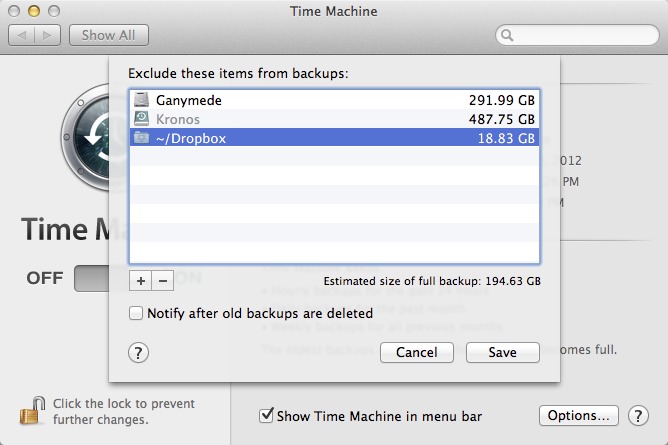Depending on your operating system (Linux, macOS, or Windows), you may see some or all of the options below in the preferences menu. On Linux, you can change some of these settings using commands. Settings in the general tab. Start Dropbox on system startup. You can have Dropbox launch automatically whenever you start your computer.
- CNET Download provides free downloads for Windows, Mac, iOS and Android devices across all categories of software and apps, including security, utilities, games, video and browsers.
- Dropbox Smart Sync is a feature available to customers on Dropbox Plus, Family, Professional, and Business plans. Smart Sync allows you to easily free up hard drive space on your computer by moving files and folders to the cloud (online-only). Files and folders stored with Smart Sync will appear in the Dropbox folder on your computer, in the Dropbox mobile app, and on dropbox.com for easy file.

Let’s say a machine in your corporate fleet gets infected with malware. How would you detect it? How could you find out what happened on the machine? What did the malware do? Did it steal your browser’s passwords? What network connections did the malware make? Was it looking for crypto currency? By having good telemetry and a good host monitoring solution for your machines you can collect the context necessary to answer these important questions.
Proper host monitoring on macOS can be very difficult for some organizations. It can be hard to find mature tools that proactively detect security incidents. Even when you do find a tool that fits all your needs, you may run into unexpected performance issues that make the machine nearly unusable by your employees. You might also experience issues like having hosts unexpectedly shut down due to a kernel panic. Even if you are able to pinpoint the cause of these issues you may still be unable to configure the tool to prevent the issue from recurring. Due to difficulties like these at Dropbox, we set out to find an alternative solution.
One of the first things we did was create a list of requirements and success criteria:
- Stability and minimal performance impact
- Kernel panics and obvious delays or other lockups are certainly not acceptable
- Record interesting activity on the host
- Process spawning
- Filesystem Modifications
- Network activity
- Details about configuration settings and installed applications
- Record details about these observables which would tell us:
- Date and time
- How observations are related (parent-child relationships, or shared keys which connect events, like process id)
- Additional details to assess the relevance or impact of the event
During the investigation we reviewed a number of tools that could solve some of our problems, but none of the tools could solve all of our problems. After careful review we decided that we didn’t want to reinvent the wheel and that having multiple tools that each solved a specific requirement would better serve our needs.
We eventually landed on 3 open source tools: osquery, Santa, and the OpenBSM/Audit system; with each tool serving a specific purpose:

Dropbox App Download
- osquery provides periodic snapshots describing changes to the state of a machine
- Santa provides real-time process launch events containing details about the executing binary
- OpenBSM/Audit is real-time system call monitoring module in the macOS kernel that can provide networking, file operations, administrative events, and other system interactions.
osquery is an open source operating system instrumentation framework for Windows, macOS, Linux, and FreeBSD by Facebook. This tool allows users to query the state of their system via a SQL interface. Some of the useful features of this service are:
- The ability to parse preference and configuration files, list installed applications, current running processes, file path information, and installed browser plugins.
- This is useful if we are looking for suspicious applications or if we want to know if a machine has some specific configuration settings.
- osquery by default comes with several packs of useful queries and the core application is regularly being updated to include new features.
Dropbox Macos Install
Using osquery we can perform queries to search for IOCs (Indicators of Compromise) on a host such as the recent Proton malware:
Go directly to the Dropbox folder’s default location
By default, the Dropbox folder is located in your user folder on your computer’s hard drive. To go straight to the Dropbox folder’s default location, follow the instructions for your operating system below:

Linux
- Open a terminal and type cd ~/Dropbox.
macOS
- Open Finder and select Go to folder... from the Go menu.
- In the dialog box that appears, type ~/Dropbox/ and then press the return key.
Windows
- Open Windows Explorer.
- Type %HOMEPATH%/Dropbox into the address bar.
Note: If you’ve connected a personal and work Dropbox account, you'll need to specify which Dropbox folder you're trying to reach. For example:
- ~/Dropbox (Personal)
- ~/Dropbox (Acme Inc)

Create a shortcut to the Dropbox folder on your computer
For easier access to the Dropbox folder on your computer, you can create a shortcut. To do so:
Dropbox Macos
- Go directly to the Dropbox folder’s location.
- Right-click the Dropbox folder.
- Click Make Alias (or Make Link on Linux).
Dropbox Macos Catalina
Your shortcut will appear with alias appended to the name of the file. You can move the shortcut to the location you’d like to store it in.
